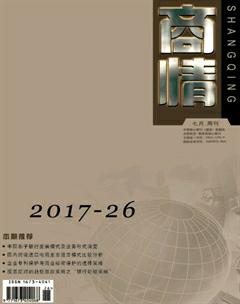First Language use in Second Language Classroom
马媛
Abstract: Employing L1 in L2 classroom has been a disputing issue. This essay aims at discovering the historical background on this topic, as well as applying the theories flexibly into practices in vocational school context in China. In conclusion, the proper and best-balanced use of Chinese in vocational English classes is beneficial to both teaching and learning.
Keywords: L1, use, L2, appropriate
1.Historical development
Years ago, monolingual teaching was the widely acknowledged norm as Grammar-Translation was the dominant teaching method.. Later on, Krashen (1985, p.14), in his Comprehensive Input Hypothesis, proposed that L2 should be maximised in classroom. Hence, students could learn L2 implicitly as to achieve language competence. Oppositely, Cook (2001) stressed this cannot reflect real communication and indicated that class activities discussing topics is not real and they may come across different scenes in real situations.
Recently, the importance of L1 in L2 classroom has been re-evaluated. A term ‘code-switching was proposed. Poplack (2000) demonstrated ‘code-switching is students could alternate within the two languages. However, use of L1 in L2 classroom does not always conform to the characteristics of code-switching.
1. L1 in L2 classroom
L1 in L2 classroom is controversial. A broad distinction exists between teacher use and student use of L1, monolingual teacher and bilingual teacher.
There exist great diversities in English language education in China. Teachers attitude towards using Chinese in class differs. Whether to use L1 in the classroom is to be decided by age and ability of the students.
In my context, time limitation is considered first. As we have tough tasks, its impossible to totally use English in whole class with acknowledging much knowledge and information. Meanwhile, unfamiliarity to the environment makes it possible to use Chinese in class to ease anxiety and confusion. Some of my students are shy and when only permitted to use English can they feel nervous. This may lead to slow progression.
Its common to have collaborative work in my class, in detail; teachers often use TBL in classroom. In preparing and conducting these tasks, we use Chinese to support us. Swain (2000) also demonstrated that collaborative tasks gives students future individual tool, though initially collaboratively. In task management and task clarification, we use Chinese when we have different interpretations of the task. Only when we understand the activity mutually can we work together more efficiently. Chinese could also help the overall organization and to establish our collaboration.
Vocational school language education policy has changed dramatically. In 20th century, bilingual approach is popular here while recently, monolingual approach has been advocated. This promotes the large quantity of exposure to English which is considered by teachers an excellent way to teach. They think that one premise of competent English learners is to give them a rich English environment. Knowing the theory of Krashens input hypothesis, I gradually understand the reason teachers adopt such approach.
The aim of teaching is to motivate learners to learn automatically. The students preference is crucial here. What teachers actually do may not in consistent with educational policy although they have maximized English use. Consider when and how much of Chinese is through teachers empirical experience.
In listening class, the teacher uses Chinese to set background knowledge and describe correspondence vocabularies. In this sense, teachers could stimulate previous knowledge as to motivate students. In reading and grammar classes, teachers could enhance understanding by defining difficult words and grammar. In this sense, positive language transfer from Chinese to English. Chinese can gradually disappear with the students getting more proficient in English.
In speaking class, for there is a foreign teacher, students create words and expressions to communicate. They use as much as possible the target language to practise. The theory in speaking classes is beneficial as the aim of the class is for communication.
In writing class, the importance of Chinese is strengthened. Students discuss the content and structure of the composition in depth to facilitate writing. Teacher also gives Chinese instructions and difficult concepts.
In conclusion, the proper use of Chinese in vocational English classes is beneficial. In bilingual education, teachers are ‘dictionary designers who choose own proportion of L1 to make it more effective.
Reference
[1]Cook, V.J. Using the First Language in the Classroom. Canadian Modern Language Review.2001.
[2]Krashen, S.D. The Input Hypothesis: Issues and Implications. Longman: London and New York.1985.
[3]Macaro, E. '' Analysing student teachers' code switching in foreign Language classrooms''. In Modern Language Journal.2001.
[4]Poplack, S.Sometimes Ill start a sentence in Spanish. In The Bilingual Reader. . Psychology Press.2000.
[5]Swain, M., & Lapkin, S. Task-based second language learning: The uses of the first language. Language Teaching Research. 2000.

